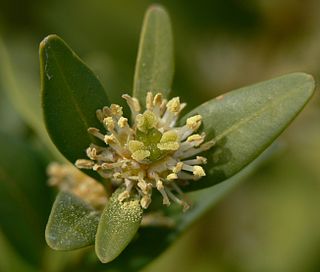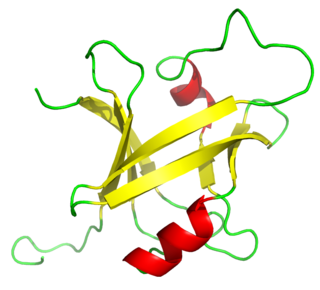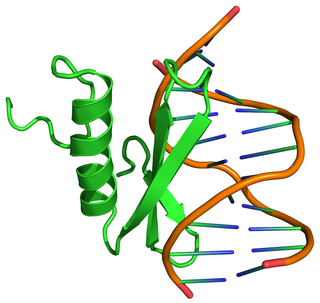
A microorganism, or microbe, is an organism of microscopic size, which may exist in its single-celled form or as a colony of cells.

The Buxaceae are a small family of six genera and about 123 known species of flowering plants. They are shrubs and small trees, with a cosmopolitan distribution. A seventh genus, sometimes accepted in the past (Notobuxus), has been shown by genetic studies to be included within Buxus.

Nelumbo nucifera, also known as Sacred lotus, Indian lotus, or simply lotus, is one of two extant species of aquatic plant in the family Nelumbonaceae. It is sometimes colloquially called a water lily, though this more often refers to members of the family Nymphaeaceae.

The history of genetics dates from the classical era with contributions by Pythagoras, Hippocrates, Aristotle, Epicurus, and others. Modern genetics began with the work of the Augustinian friar Gregor Johann Mendel. His work on pea plants, published in 1866, provided the initial evidence that, on its rediscovery in 1900, helped to establish the theory of Mendelian inheritance.

Birbal Sahni FRS was an Indian paleobotanist who studied the fossils of the Indian subcontinent. He also took an interest in geology and archaeology. He founded what is now the Birbal Sahni Institute of Palaeobotany at Lucknow in 1946. His major contributions were in the study of the fossil plants of India and in plant evolution. He was also involved in the establishment of Indian science education and served as the President of the National Academy of Sciences, India and as an Honorary President of the International Botanical Congress, Stockholm.

Goupia is a neotropical genus of flowering plants and the sole genus included in the family Goupiaceae. There are three species, all found in tropical northern South America.

Bunzō Hayata was a Japanese botanist noted for his taxonomic work in Japan and Formosa, present day Taiwan.

The inorganic dye ammoniated ruthenium oxychloride, also known as ruthenium red, is used in histology to stain aldehyde fixed mucopolysaccharides.
Harold St. John was a professor of botany at the University of Hawaiʻi at Mānoa from 1929 to 1958. A prolific specialist in field botany and systematics, he is credited with discovering about 500 new species of Pandanus, along with many other species, especially in the Pacific Islands.

The College of Natural Science (NatSci) at Michigan State University is home to 27 departments and programs in the biological, physical and mathematical sciences.

The B3 DNA binding domain (DBD) is a highly conserved domain found exclusively in transcription factors combined with other domains. It consists of 100-120 residues, includes seven beta strands and two alpha helices that form a DNA-binding pseudobarrel protein fold ; it interacts with the major groove of DNA.

Ethylene-responsive element binding protein(EREBP) is a homeobox gene from Arabidopsis thaliana and other plants which encodes a transcription factor. EREBP is responsible in part for mediating the response in plants to the plant hormone ethylene.
Enid Anne Campbell MacRobbie, is a Scottish plant scientist, Emeritus Professor of Plant Biophysics at the University of Cambridge and a Life Fellow of Girton College. Her specialty is biophysics, with particular interests in ion fluxes and stomata.
IF2: Interceptor Force 2, commonly called Interceptor Force 2, is a 2002 Sci Fi Pictures science-fiction TV movie on the Sci Fi Channel. A sequel to the 1999 Sci Fi Channel telefilm Interceptor Force, it is directed by Phillip Roth, and stars Olivier Gruner, Roger R. Cross, Adrienne Wilkinson, Elizabeth Gracen and Nigel Bennett. Government-trained soldiers called the Interceptors are assigned to look at a crash site of an alien spacecraft in Russia where they find a 7-foot-tall (2.1 m) alien that can change shape.

Earl Lemley Core was a botanist and botanical educator, researcher, and author as well as a local West Virginia historian. He was founder of the Southern Appalachian Botanical Club and editor of its journal, Castanea, for thirty-five years. He was a teacher and professor at West Virginia University (WVU) from 1928 to 1972. He served for four years on the Morgantown City Council, and served as mayor of Morgantown for two years. The Earl L. Core Arboretum at WVU was named in his honor in 1967.

Zaporizhzhia Polytechnic National University is a Ukrainian university in Zaporizhzhia in Ukraine.
Dennis Robert Hoagland was an American chemist and plant and soil scientist working in the fields of plant nutrition, soil chemistry, agricultural chemistry, biochemistry, and physiology. He was Professor of Plant Nutrition at the University of California at Berkeley from 1927 until his death in 1949.

Jerrold Meinwald was an American chemist known for his work on chemical ecology, a field he co-founded with his colleague and friend Thomas Eisner. He was a Goldwin Smith Professor Emeritus of Chemistry at Cornell University. He was author or co-author of well over 400 scientific articles. His interest in chemistry was sparked by fireworks done with his friend Michael Cava when they were still in junior high school. Meinwald was also a music aficionado and studied flute with Marcel Moyse – the world's greatest flutist of his time.

Sci-Hub is a shadow library website that provides free access to millions of research papers, regardless of copyright, by bypassing publishers' paywalls in various ways. Unlike Library Genesis, it does not provide access to books. Sci-Hub was founded in Kazakhstan by Alexandra Elbakyan in 2011, in response to the high cost of research papers behind paywalls. The site is extensively used worldwide. In September 2019, the site's operator(s) said that it served approximately 400,000 requests per day. In addition to its intensive use, Sci-Hub stands out among other shadow libraries because of its easy use/reliability and because of an enormous size of its collection: a 2021 study estimated, that Sci-Hub provided access to 95% of all scholarly publications with issued DOI numbers, and on 15 July 2022 Sci-Hub reported that its collection comprises 88,343,822 files.

Nepenthes pudica is a tropical pitcher plant known from a handful of localities in the Mentarang Hulu district of North Kalimantan, Borneo, where it occurs at 1100–1300 m above sea level. It is notable for producing achlorophyllous subterranean stems bearing functional underground pitchers; very few pitchers are produced above ground.















